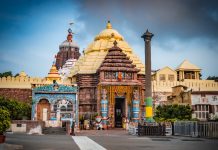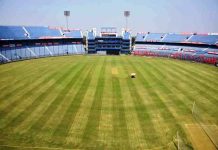Ileana Citaristi
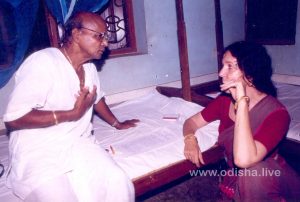
‘As I know my Guru’ is a series of stories where veteran artists recollect memories and anecdotes about their gurus. Here Odissi exponent Padma Shri Ileana Citaristi presents her Guru Kelucharan Mohapatra to the world.
Guruji’s first handling of construction materials goes back to the time when , for few months before starting the work in the ‘pana baraja’, he helped his maternal uncle, Arthabanda Maharana, in temple construction work.
Since then the fascination remained and one can say that, all through his life, the passion for brick and cement ‘compositions’ ran as an undercurrent to his primary passion for dance. Similar amount of concentration and research aptitude could be seen at work whether he was building an attic, raising a boundary wall, planning the extension of the building or counting the beats of a rhythmic composition. Each type of work was a new discovery and the solutions found each time, were directly derived from the practical study of each situation.
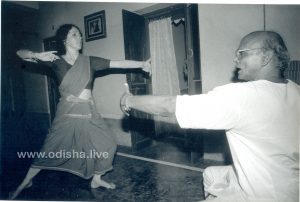
Extremely observant and alert, the beam structure observed in a roof in Bombay would become the source of inspiration for the construction of the ceiling of his house, without having to consult any structural engineer! His way of relating to the masons is interesting; he literally used to become one of them, sharing their work, mixing the cement, joining the bricks, casting the roof, plastering the walls and also keeping the work going on his own during their absence.
During the construction of the dance hall of his first house, the one which he built in Cuttack in the early sixties, Guruji decided to construct a false ceiling, which would be entirely made of bamboo; the task was not easy because the bamboo had to be tightly intertwined and the entire structure had to be self-supporting.
The mason refused to do it, complaining that the bamboo provided for the job was of inferior quality. Guruji took up the challenge and vowed that he will be able to complete the entire ceiling with the same bamboo in four days. The mason could not believe his eyes when he returned after four days and found the work neatly executed by him!
While the floor was being laid, he taught the workers the technique of designing a white lotus at the centre of the cemented surface. He cut a piece of folded paper into the shape of a petal. He then unfolded it and placed it at the centre of the floor. After it had been traced on the wet cement, the inside of the petals were scooped out and filled with white cement. In this way he created the beautiful ‘bindu’ in the middle of the dance floor which witnessed to the blossoming of so many dancers in the years to come.
The ‘ghara’ (space for worship) was constructed soon after shifting to the new house around 1965. The place had been a natural choice; for soon after purchasing the field, he had seen a snake circulating at that very spot; months later, the snake reappeared, again at the same place, while the foundations were being laid. The wooden door-posts and the door for the small temple-house were prepared by Guruji himself; he planed the wood, inlaid it and polished it before fixing it to the walls.
By the time in the early nineties Guruji started the construction of his second house , the one where he was residing at the time of his death, he had become an expert engineer. The house kept growing along the years; from an initial single bedroom house it became one having two classrooms, two bedrooms and nine bathrooms. The entire design and expansion plan has been handled by him without consulting any architect or engineer!
During this phase I was also constructing my own house and in spite of having an architect and structural engineer at my back I often used to go to him to ask for advice; our discussion would range from the proportion of cement and sand required for casting the roof to the amount of rod required for building the supporting pillars.
Guruji was a staunch supporter of rod and concrete as construction materials; he did not believe in ‘desi’ devices, perhaps because too well aware of the fury of the floods and cyclones which so often sweep over Orissa. But the way he used to embellish and engrave the cement slabs transforming them into beautiful frames of lace is just amazing!
In the late nineties he started his third construction work: a small temple, in his native village, around the tree that has been since time immemorial the abode of Ma Bhuasuni, the goddess to whom he had been offered as a five-year old. “ I felt guilty” he once told us,” to have constructed so far two houses for me and having left my ‘mother’ under the open sky for so long!”
To supervise the work on the temple he used go to Raghurajpur every morning by car along with the masons, who had by then become part of his family, and stay there the whole day. The ‘pratishta’ of the temple was conducted in 2003 with a grand ceremony which lasted three days with Guruji taking extreme care of each detail.
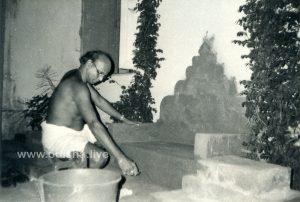
The temple is simple but beautiful, like a delicate filigree work and envelops the old tree and the Goddess installed under it. Guruji can rest in peace; his beloved Bhuasuni has now a solid roof to protect her! .
(The writer is a Padma Shri awardee, an Odissi exponent and founder of Art Vision dance school)



